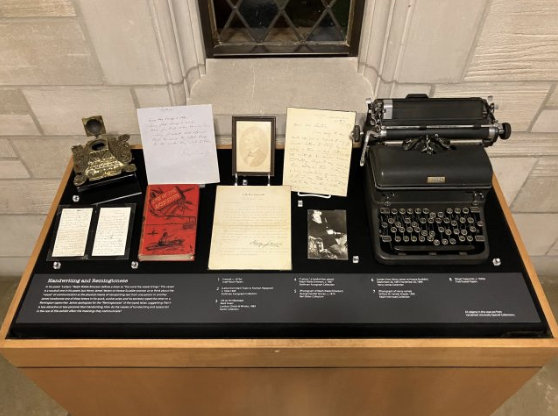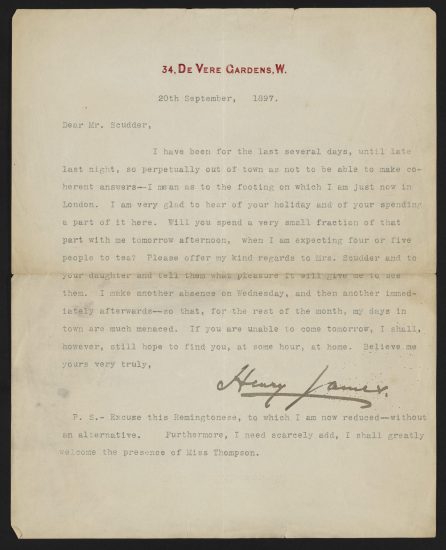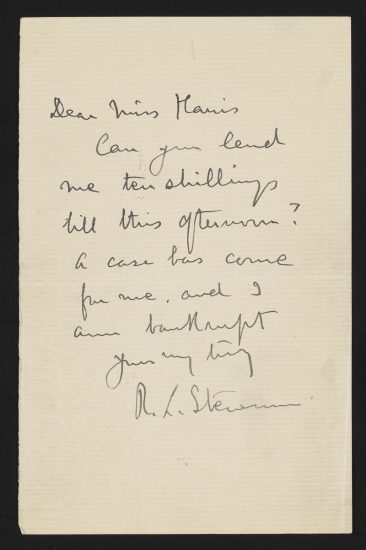
A new exhibit at the Jean and Alexander Heard Libraries’ Special Collections and University Archives offers a glimpse into the personal and professional lives of some of the world’s most renowned authors and poets, including several with connections to Vanderbilt University.

Please Continue: Literary Correspondence as Conversation features notes and letters penned by acclaimed writers representing more than a century of English literature, from the mid-1800s to the 1980s. Highlights include correspondence from Mark Twain, Henry James, Arthur Conan Doyle, Zora Neale Hurston, C.S. Lewis, Flannery O’Connor, Langston Hughes, P.G. Wodehouse, Katherine Anne Porter and others.
Vanderbilt’s distinct literary history is represented through letters to alumni associated with the Fugitives, the esteemed writers group that formed at the university in the 1920s. Among the examples are notes to alumnus and Pulitzer Prize winner Peter Taylor and his wife, the poet Eleanor Ross Taylor, from their literary friends, including short story writer and novelist Eudora Welty and poets Richard Wilbur, Elizabeth Bishop and Robert Lowell.
“Each letter was sent with the hope that it would bring a response in return, continuing the conversation,” said Curator of Manuscripts Mary McSparran in her introduction to the exhibit, which also features writing paraphernalia such as ink wells, typewriters, postcards and stationery. “Because the fiction writers and poets who wrote this correspondence were all devoted to the craft of writing, their missives are works of art in themselves, albeit more personal and playful than their published volumes had the freedom to be.”

The exhibit comprises four cases:
- “Handwriting and Remingtonese” explores letter-writing methods, focusing especially on manuscript and typescript documents.
- “Requests and Replies” includes quick questions and answers sent by writers to various recipients.
- “Literary Friendships” features several writers who were also friends and used letter-writing to maintain their relationships across distances.
- “Letter to the Editor” highlights letters to and about the people who edited and helped publish the authors who are represented.
“The writers’ epistles express personality not only through the chosen text but also through paper color, handwriting, choice of writing utensil, and the many other physical details required to complete and mail a letter,” McSparran said. “Each letter hints at the life on the receiving end of the correspondence, prompting us to imagine responses to the questions asked, praises doled out, and affections expressed.”
Please Continue: Literary Correspondence as Conversation is on display through late December 2024 at Special Collections and University Archives, 1101 19th Ave. S. The exhibit is free. Viewing hours are Monday–Friday, 9 a.m.–5 p.m.